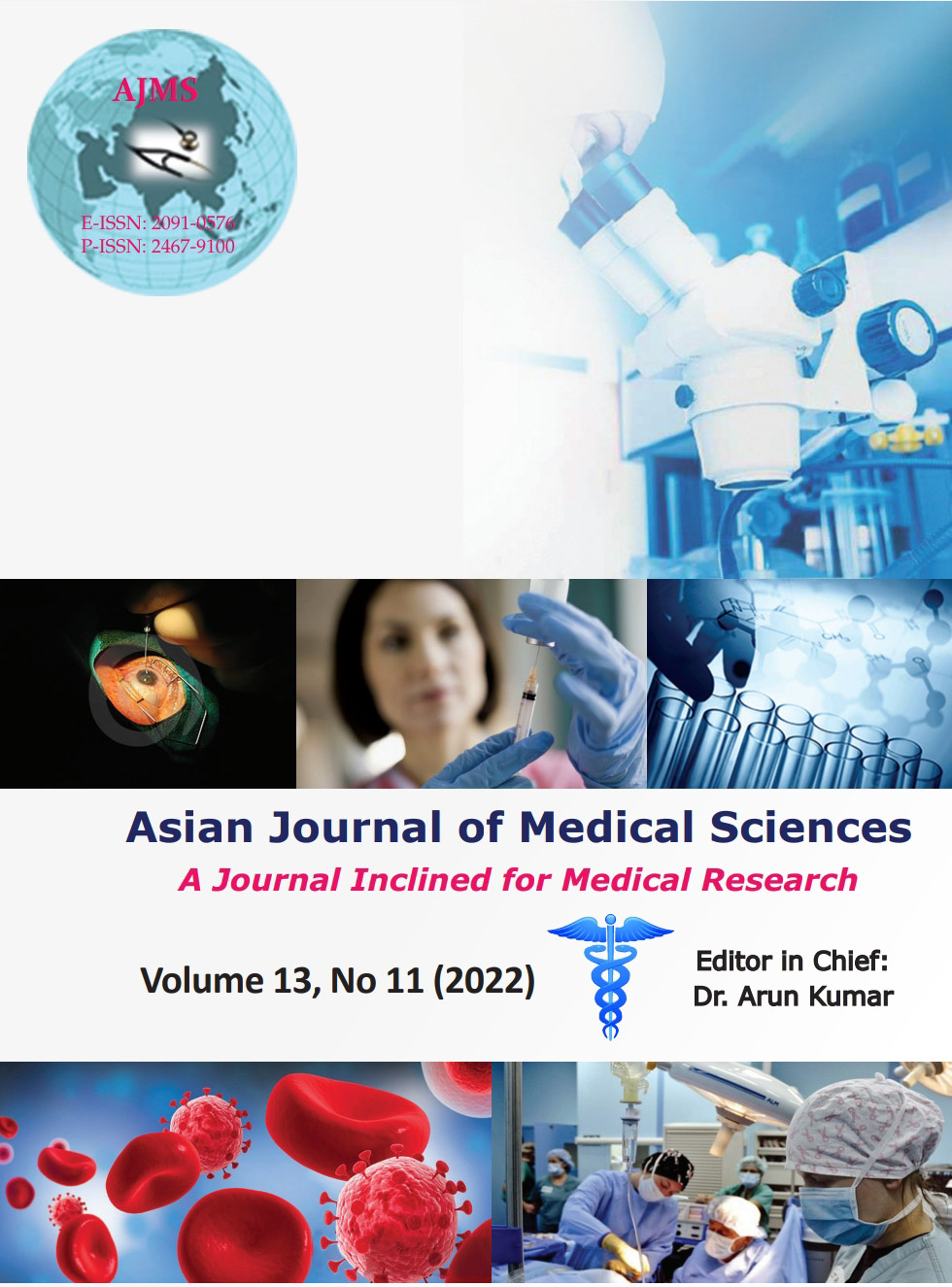Surgical outcomes of canalicular tear repair with self-retaining Mini-Monoka stent in a tertiary care hospital in Kashmir in North India
Keywords:
Canalicular tear; Mini-Monoka stent; Functional and anatomical successAbstract
Background: Canalicular lacerations contribute to approximately 16% of the eye lid injuries. The torn medial end is to be identified, cut end sutured, and then the canaliculus intubated to restore patency. Silicone being inert, flexible, easily available, and cost effective is the material of choice for lacrimal stenting.
Aims and Objectives: The aim of this study was to determine the surgical outcomes of the canalicular tear repair with the self-retaining Mini-Monoka stent in a tertiary care hospital in North India.
Materials and Methods: Patients presenting to tertiary care hospital in Kashmir, North India with canalicular tear from August 2019 to December 2020 were included in this prospective study and repaired with self-retaining Mini-Monoka stent under microscope. All the patients were analyzed for demographic data, mode of injury, complications, and outcomes and followed up after a week, 6 weeks, and 3 months and stent removed after 6 weeks.
Results: The study was conducted on 18 patients. The mean age of the patients was 37.5 years with male: female ratio of 5:1. The lower canaliculus was most commonly involved and road traffic accidents was the most common mode of injury (27.7%). The most common associated injury was lid injury (50%). The mean time of stent removal was 6 weeks±2 weeks. Syringing was done in all the patients except children. At last follow-up, 17 out of 18 patients had functional and anatomical success in terms of absence of epiphora and patent syringing and all the patients were cosmetically satisfied.
Conclusion: Our study concludes that surgical repair of canalicular tear with Mini-Monoka stent is a safe and simple reliable technique, cosmetically satisfying with minimal manipulation giving high functional and anatomical success rate post repair.
Downloads
Downloads
Published
How to Cite
Issue
Section
License
Copyright (c) 2022 Asian Journal of Medical Sciences

This work is licensed under a Creative Commons Attribution-NonCommercial 4.0 International License.
Authors who publish with this journal agree to the following terms:
- The journal holds copyright and publishes the work under a Creative Commons CC-BY-NC license that permits use, distribution and reprduction in any medium, provided the original work is properly cited and is not used for commercial purposes. The journal should be recognised as the original publisher of this work.
- Authors are able to enter into separate, additional contractual arrangements for the non-exclusive distribution of the journal's published version of the work (e.g., post it to an institutional repository or publish it in a book), with an acknowledgement of its initial publication in this journal.
- Authors are permitted and encouraged to post their work online (e.g., in institutional repositories or on their website) prior to and during the submission process, as it can lead to productive exchanges, as well as earlier and greater citation of published work (See The Effect of Open Access).




